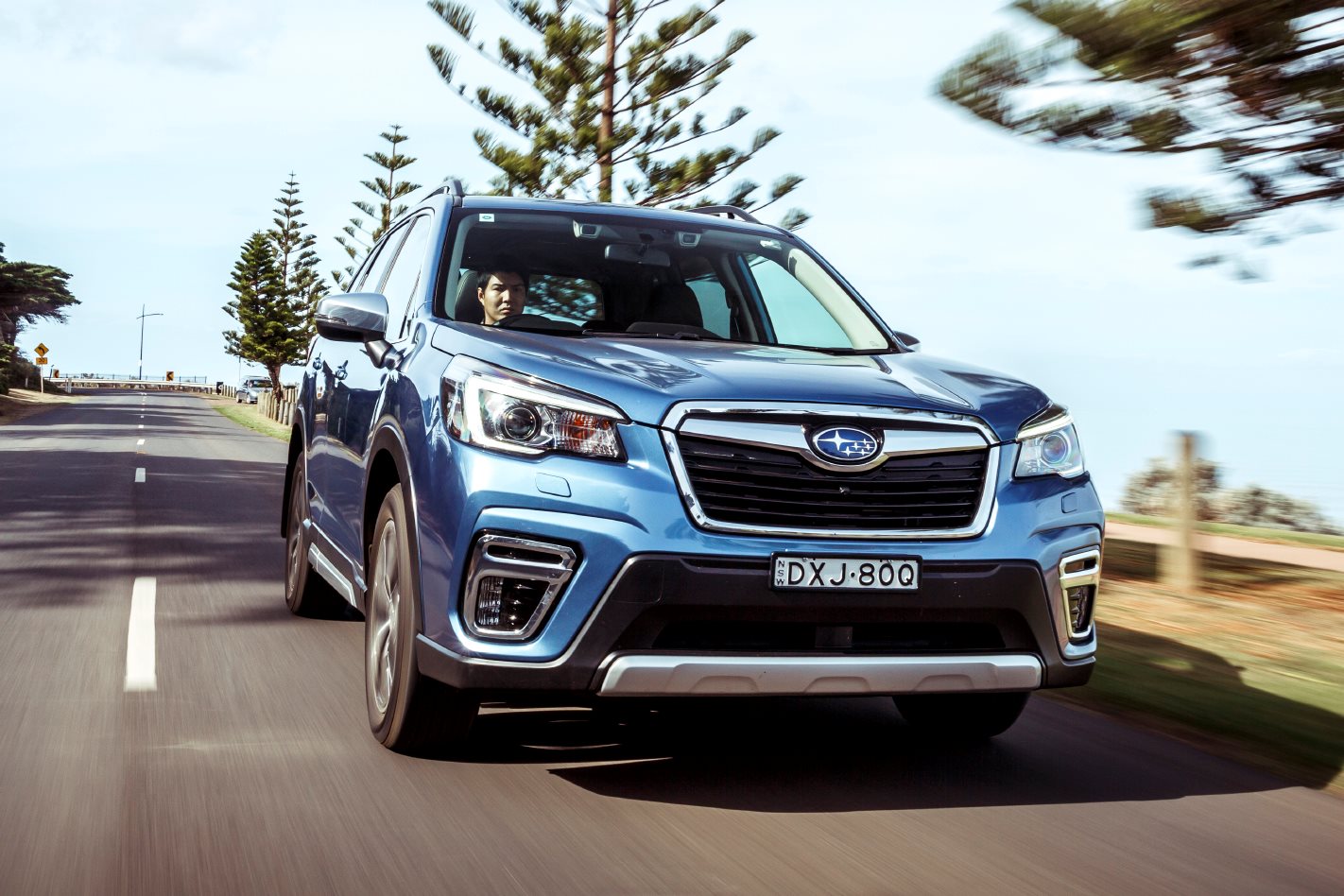What’s in the garage?
It’s as tough as old boots, about their aesthetic equal and, like a pair of well-worn Blundstones, soon becomes something you grow to love. Yes, we’re talking about the Subaru Forester, a car whose blend of talents has always found a ready reception here in Australia. It’s a favourite here at Wheelstoo and came within a sniff of deposing the Volvo XC40 for this year’s Car of the Year crown. There are a few on the judging team who still can’t quite come to terms with the Subaru failing to claim that particular win. We took the range-topping version of the all-wheel-drive Forester and have gathered the highlights for you right here in a quick and easy breakdown of why we rated it so highly.

We put the Subaru up against its key rivals in a comparison test that you can catch in the June issue. Subscribers and regular readers will be able to read how it did against the evergreen Mazda CX-5, the box-fresh Toyota RAV4, the polished Volkswagen Tiguan and the pin-sharp Hyundai Tucson, but in the meantime, here’s how it squares up against some other rivals. Rivals you’d turn to if you wanted more than a modicum of off-road ability.
What we reckon
| The Forester’s has three aces up its sleeve that make it a brilliant everyday car. First is the interior space, while I’ll avoid the overworn Doctor Who cliché, the Subaru’s packaging of the cabin is truly remarkable, with ample space all around. Second is the glasshouse, which allows for excellent exterior vision, and fills the cabin with light. Lastly, is the ride, which is pillow-like in its suppleness. Combined, these make the Forester a truly fuss-free experience to drive. |
| The great thing about the Forester is that, if you’re so inclined, you could buy the absolute base model for $33,490 and you wouldn’t actually feel as if you were missing out on too much. That’s what I’d do. That said, because this 2.5i-S is the flagship model, it does feel pretty well appointed against its key rivals. What really puts it into perspective is that the range-topping Kia Sportage is more than $6k more expensive. The top Mazda CX-5 is more than eight grand pricier. I reckon the Forester is more versatile than both because it offers an element of off-road capability too. It’s a really well-rounded package. |
| Pleasing details abound in the latest Forester, such as doors that open almost 90º, multitude storage choices, a chime reminding drivers the car stationary car ahead has moved, fast multimedia connectivity, theatre-style rear seating and a low beltline to aid kids’ vision out, unsexy but hard-wearing cabin trim, ‘X-Mode’ AWD system offering greater off-road traction capabilities in every variant, unpainted lower-body plastics to resist gravel-road stone chipping and a handy 220mm ground clearance. |
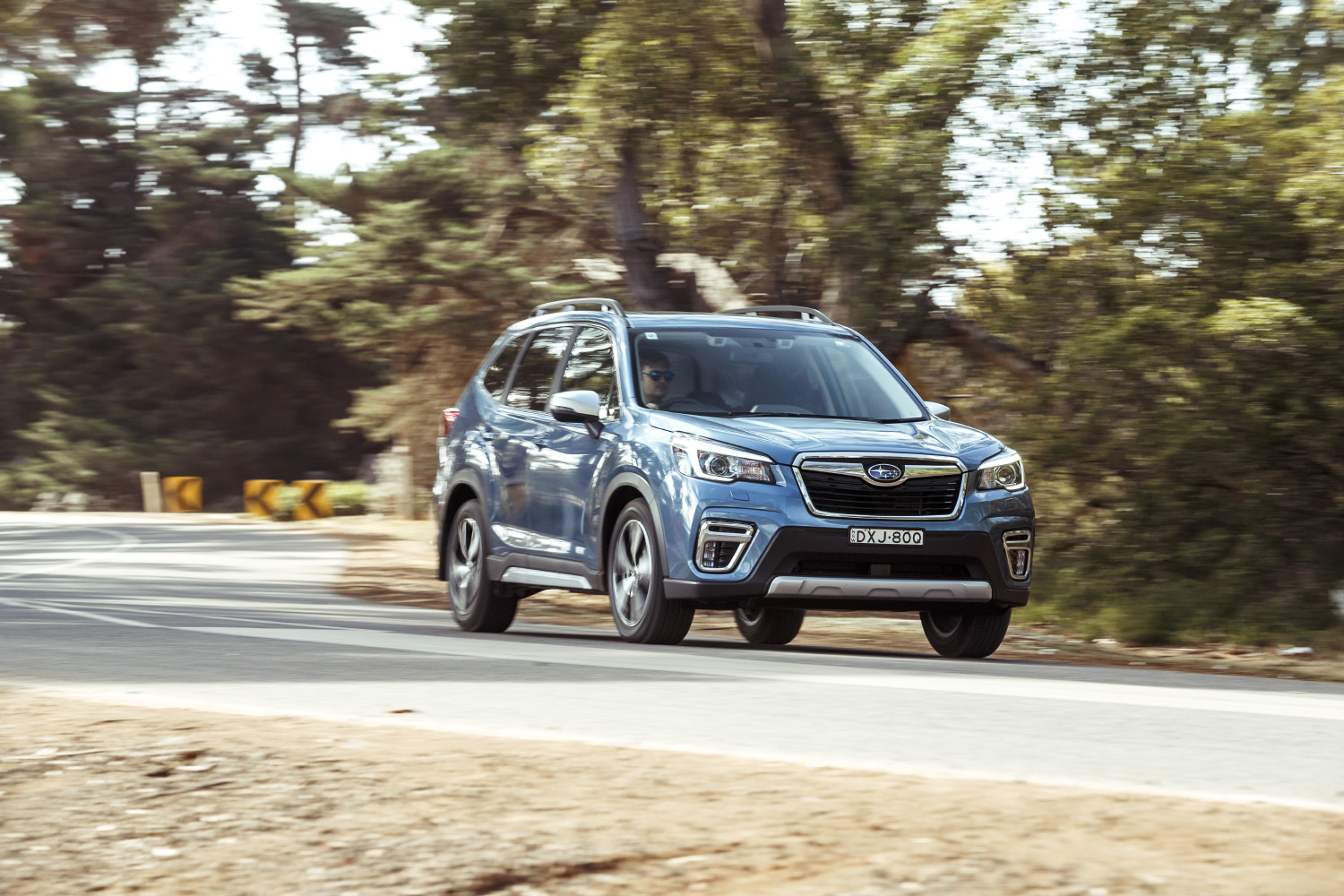
Specs and compared to rivals
u00a0 | Subaru Forester 2.5i-S | Toyota Fortuner GX | Jeep Cherokee Longitude |
Price | $41,490 | $44,590 | $41,950 |
Engine | 2.5L 4cyl | 2.8L turbo 4cyl | 3.2L 6cyl |
Output | 136kW/239Nm | 130kW/450Nm | 200kW/315Nm |
Transmission | CVT | 6spd AT | 9spd auto |
Fuel | Petrol | Diesel | Petrol |
Efficiency (combined) | 7.4L/100km | 8.6L/100km | 9.7L/100km |
Drivetrain | 4×4 | 4×4 | 4×4 |
ANCAP rating | 5 star | 5 star | 5 star |
Warranty | 5 years/unlimited | 5 years/unlimited | 5 years/100,000km |
Service Interval | 12 months/12,500km | 12 months/10,000km | 12 months/12,000km |
Seats | 5 | 7 | 5 |
Wheel size | 225/55 R18 | 265/65 R17 | 225/60 R17 |
Boot space | 498L | 200L | 570L |
Length | 4625mm | 4795mm | 4624mm |
Width | 1815mm | 1855mm | 1859mm |
Height | 1730mm | 1835mm | 1634mm |
Wheelbase | 2670mm | 2745mm | 2700mm |
Weight | 1617kg | 2110kg | 1834kg |
Towing capacity braked | 1500kg | 2800kg | 2200kg |
Front suspension | A-arms | A-arms | MacPherson strut |
Rear suspension | Multi-link | Multi-link | Multi-link |
Country of origin | Japan | Thailand | USA |
Review
Power and performance
The Forester has a combination of a naturally aspirated engine (i.e no turbo) and a CVT transmission, which together would appear to be the recipe for an extremely dull steer. While it’s no hero at the stoplights Grand Prix, 100km/h appearing in 9.2 seconds in our instrumented test, the transmission calibration is pretty good. It’s certainly a long way removed from the screeching CVT ‘boxes of old.
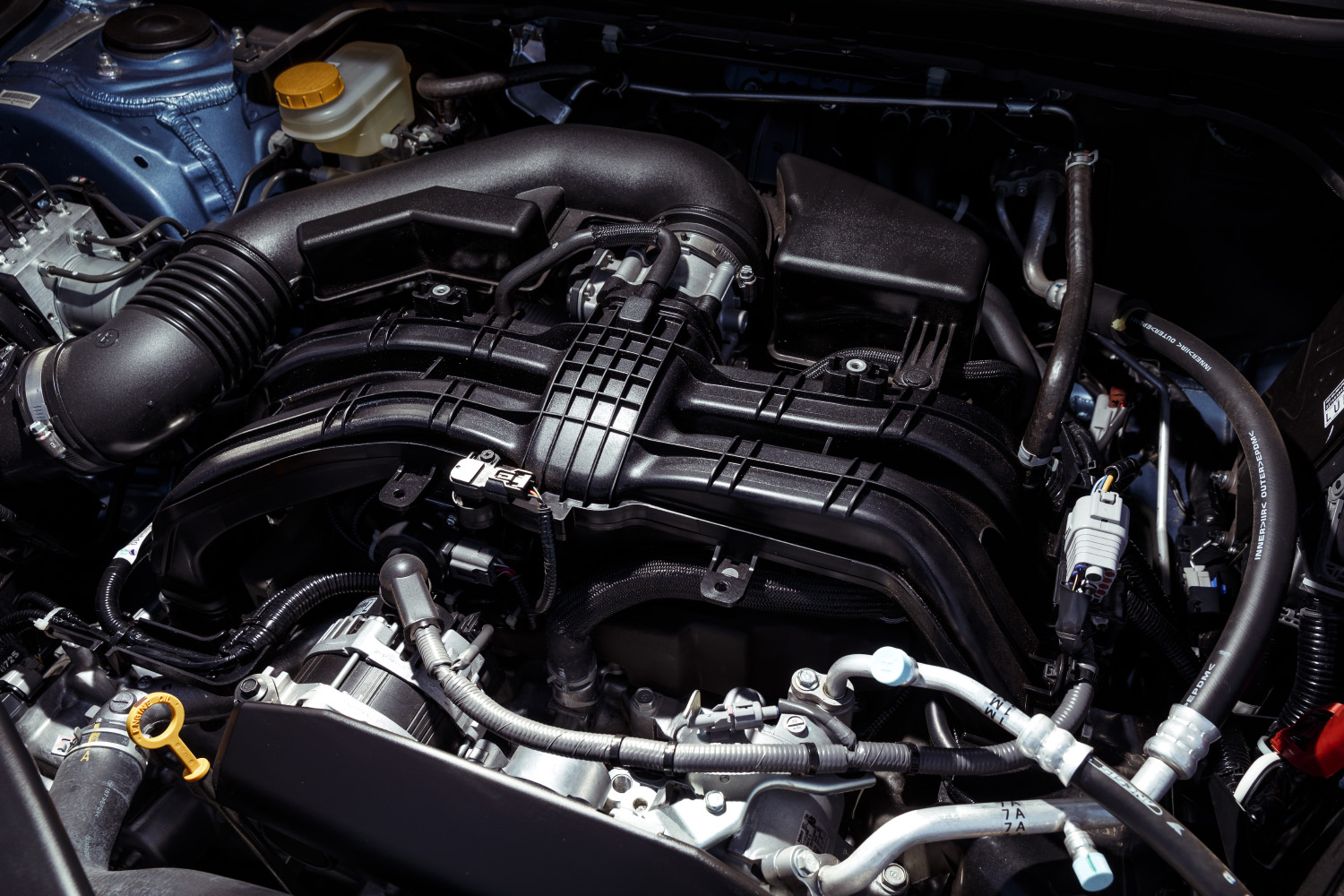
The upside of natural aspiration is that the Forester has beautiful throttle response, really connecting the driver to what’s going on under the bonnet. There’s no CVT drone and the longitudinally-mounted engine only gets loud when extended into the upper reaches of the rev range. Peak torque arrives at 4000rpm, so it does like a bit of toe to get going, but if you’re really worried about refinement, you might prefer to wait for the next generation of Forester ‘e-Boxer’ powerplants. These replace discredited diesel and marry a smaller 2.0-litre petrol engine with an electric motor, powered by a lithium-ion battery pack below the boot floor.
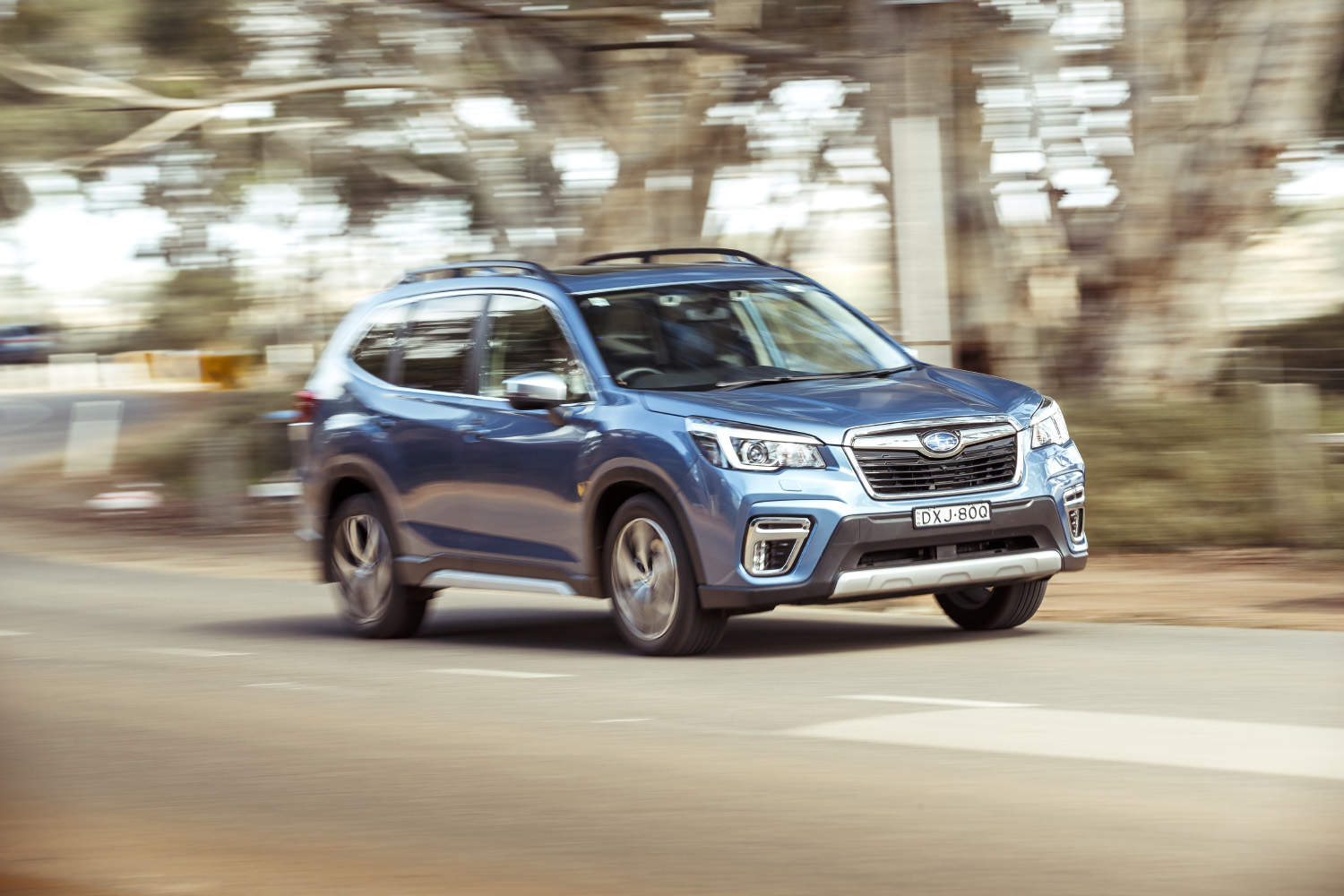
Ride and handling
Context is everything here. Compared to the Fortuner and Cherokee in the specs box here, the Forester feels light and alert. Up against more road-oriented crossovers like the Hyundai Tucson or Volkswagen Tiguan, it doesn’t feel quite so adept. The way the dynamics have been finessed will nevertheless offer something to keen drivers. The steering does a good line in both accuracy and response, and the softly-sprung, long-travel suspension allows you to feel your way into a corner and grip hard at both ends in the process. It’s in the wet that the Forester really impresses, however, with huge purchase from the front instilling an enormous amount of confidence. It almost feels impervious to weather conditions.

Body control is well managed and we can’t stress enough the Forester’s fantastic visibility from the driver’s seat. The deep glass offers an excellent all-round view which is not only a safety benefit but also means that you quickly become confident placing the car in corners or when negotiating tight urban gaps. The mirrors are also exemplary; big, clear and with a great field of view.
Ground clearance of 220mm allows you to get a fair way off the beaten track without anything metallic coming into contact with terra firma. The permanent all-wheel-drive system is also a good deal better suited to pulling you out of a sticky spot than most rivals’ front-biased part-time setups. The Forester tyre choice also lends itself to dirt/gravel roads better than road-biased rivals.
Interior and comfort
The cabin feels big and spacious, helped by a high roof arcing overhead and that vast expanse of glazing. There’s a lot going on with the fascia and some of the functions take a bit of getting used to. The digital screen on the dash is shrouded from sun glare by a plastic peak, but taller drivers can easily find some features at the top of the display (such as the clock) obscured by the plastic peak.
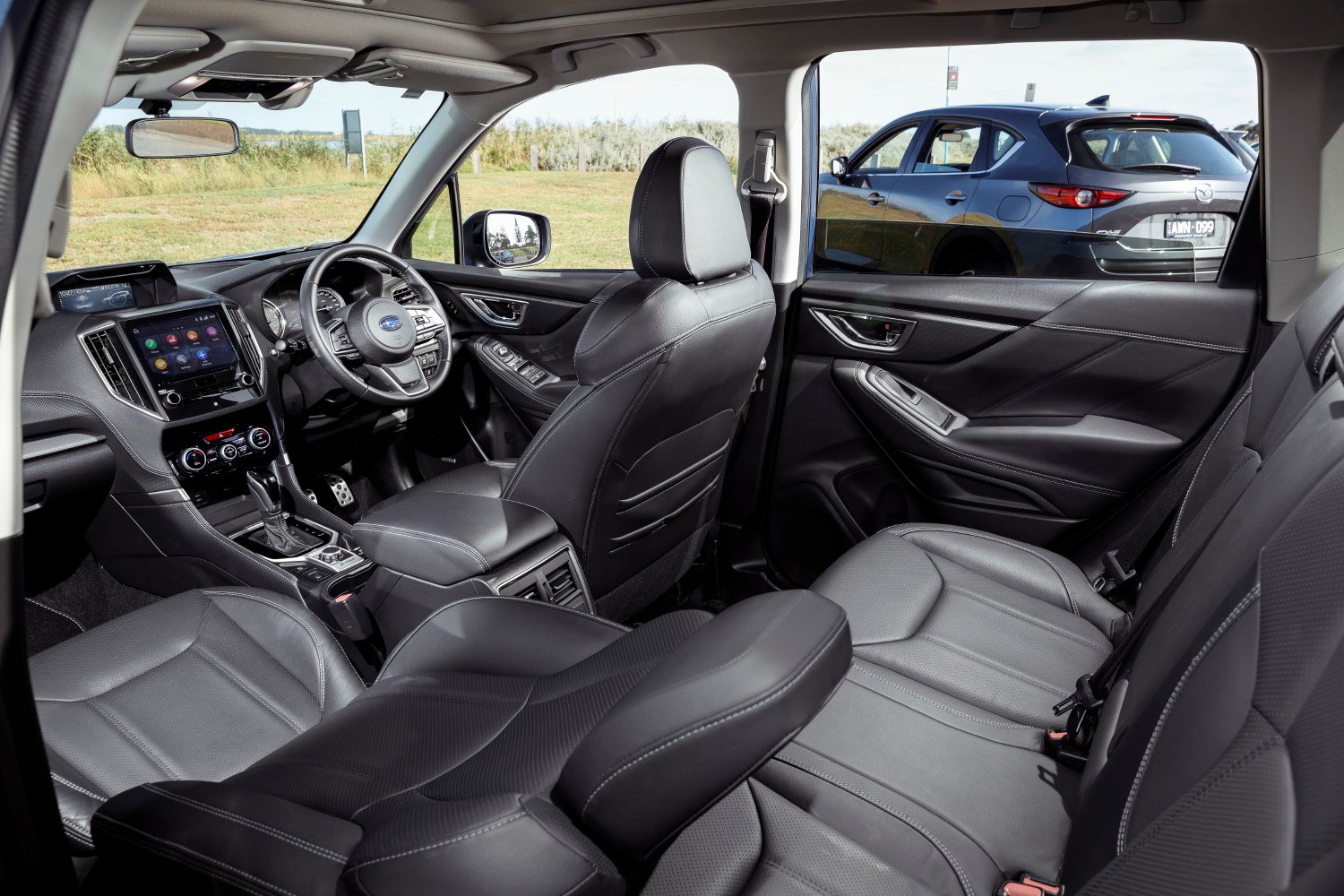
It’s hard to fault the supportive front seats or the extensive amount of oddments space about the cabin. Accommodation in the rear is also very good, despite a slight lack of under-thigh support. The 498-litre boot is a decent size and that doesn’t come at the expense of a full-sized spare wheel either – handy if you catch a flat somewhere out in the boonies.
Every Forester model above the entry-level car also features a Driver Monitoring System. You might think you know these things. They usually flash up a picture of a cup of coffee after you’ve been at the wheel for a couple of hours or, in more advanced guises, if the car thinks you’re driving lazily. The Subaru system is next level. It points a camera at the driver’s face, and its algorithm can figure out if you’ve taken eyes off the road or if you’re about to nod off. It’s spookily effective too.
Scoring
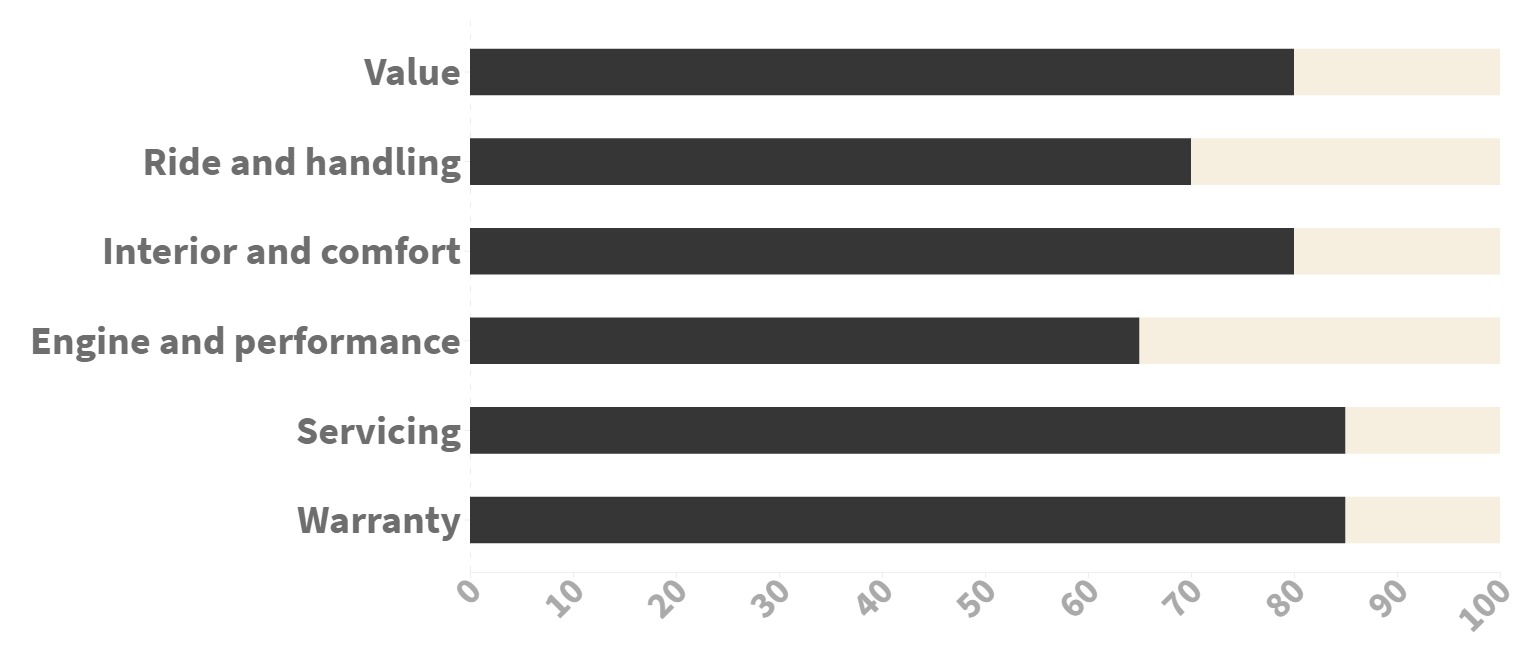
Verdict
Reacquaintance with the Subaru Forester has done nothing to dim our affection for it. We appreciate that its challenging styling, lack of outright grunt and modest towing capacity won’t endear it to everyone, but if you’re looking for that five-seat crossover that can shrug off all manner of ill-treatment and still come back for more, it’s hard to beat.
Were we shopping ourselves, the pick of the range might actually be the entry-level version, realising you a saving of $8000 and bringing it in at less than Chinese offerings like the MG ZS Essence or Haval H6 Lux. That has to be one of the most compelling value propositions in the entire SUV sector. Even the full-fruit 2.5i-S as tested here still looks a solid buy. It certainly acquitted itself well at Car of the Year.



